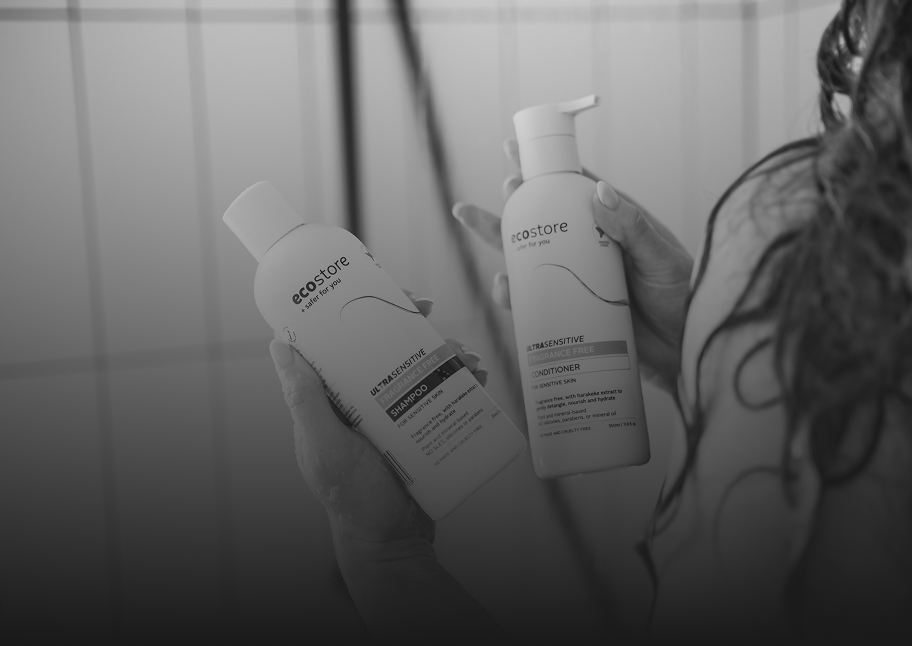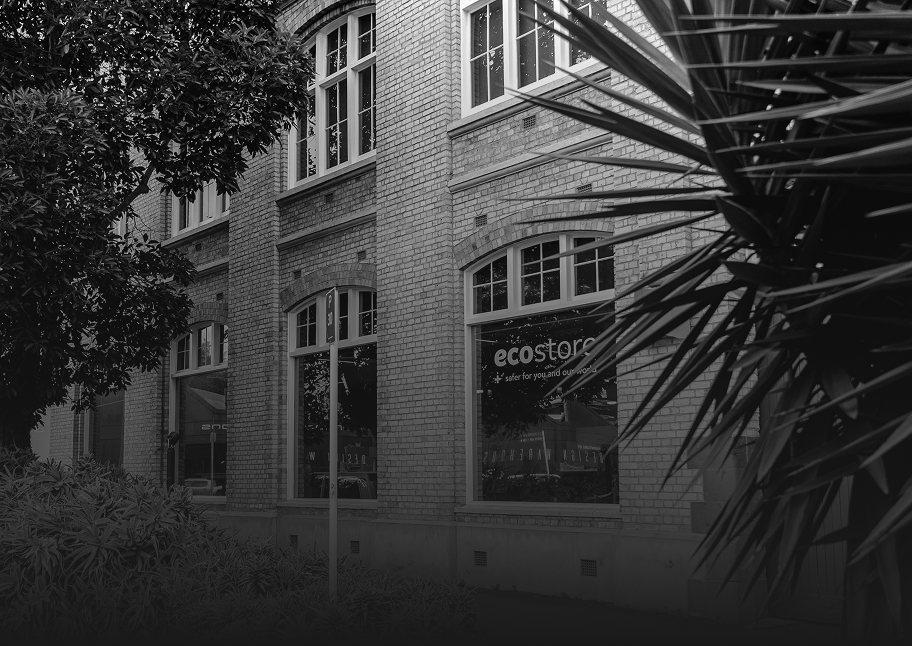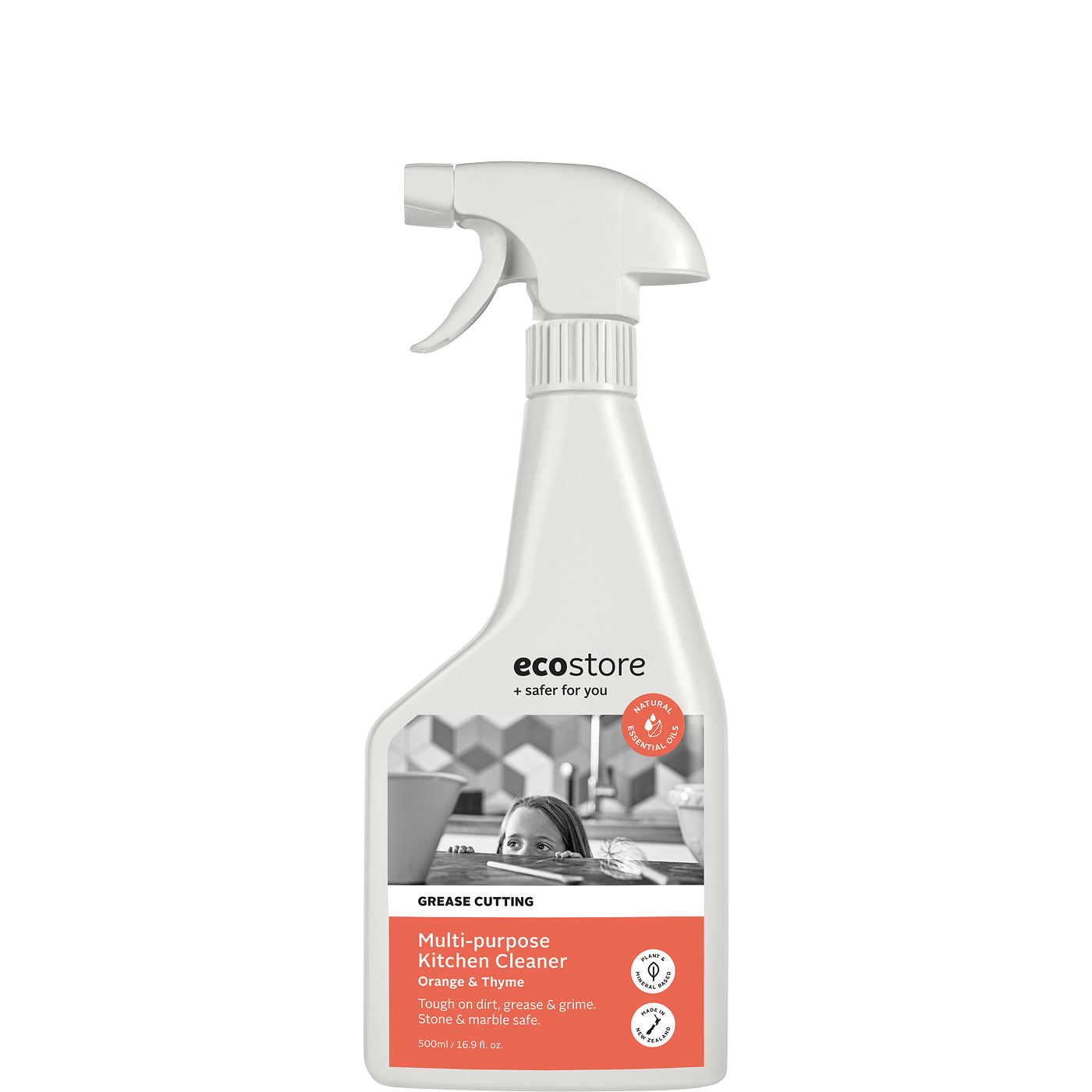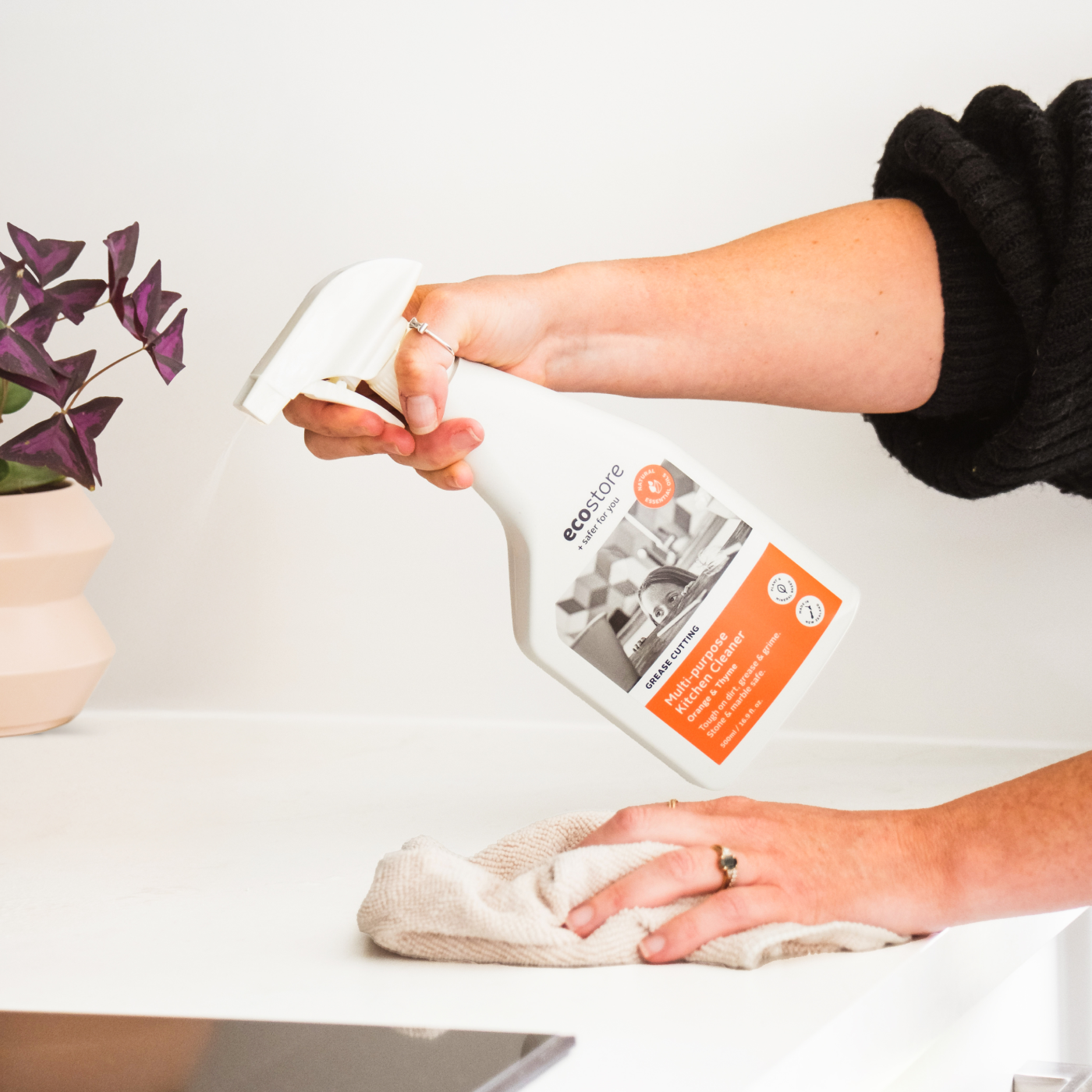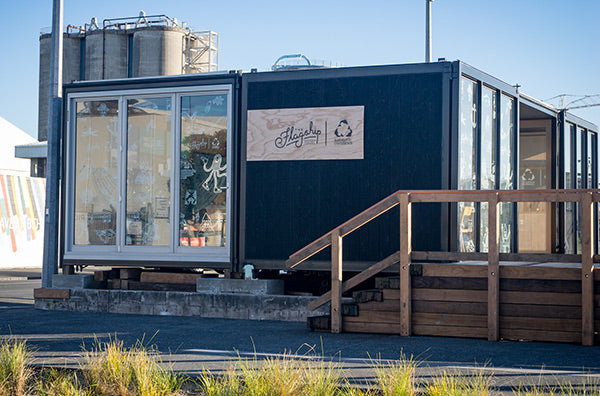We're big fans of the Living Building Challenge, because it sets the standard for people to design and build with the highest sustainability standards in mind. The certification program applies to buildings of almost any scale and location, and targets seven areas of performance: place, water, energy, health and happiness, materials, equity and beauty.
Sustainable Coastlines is one of only a few New Zealand entrants bidding to meet the requirements of the challenge with its venue The Flagship Education Centre at Auckland's Wynyard Quarter.
And it's in the ‘health and happiness' performance standard, or ‘petal', that ecostore is giving The Flagship a lift. With cleaners like our multi-purpose cleaner, glass and surface cleaner and dish liquid, as well as our handwash, Sustainable Coastlines general manager Camden Howitt says he wants to show visitors that there are product choices that are better for the environment and our health.
“Looking after the places we love needs to start at home, and with the consumption decisions we make when we vote with our wallets."
“We have invested huge effort into ensuring that all materials used at The Flagship are non-toxic; just part of our commitment to meeting the world's most rigorous building certification. That same thought process applies to our cleaning products.”
Our dish liquid, dishwasher powder and laundry detergents are approved by Environmental Choice. In 2015 the International Living Future Institute (which runs the Living Building Challenge) accepted Environmental Choice as an international equivalent to the US' Environmental Protection Agency Safer Choice label for cleaning products.
Because of the approval, anyone taking part in the LBC in New Zealand can meet the requirements of the challenge's Healthy Interior Environment imperative, which falls under the Health and Happiness petal.
According to the challenge website, a Living Building Project has to create a Healthy Interior Environment Plan, including a cleaning protocol that uses products that comply with the Safer Choice label or an international equivalent like Environmental Choice.
The Flagship was launched in April and is a community venue made almost entirely from upcycled materials. It's a transportable structure that used more than 2500 pallets re-purposed by community work offenders who gained qualifications in the construction process.
Through multimedia displays, Sustainable Coastlines hopes to use it to educate visitors about protecting our coastlines and waterways.
Along with the healthy indoor environment for the Health and Happiness standard, the building captures 100% of water on site, uses solar panels and low voltage electrical fittings, has replaced a car park with cycle parks, includes a community garden, and is accessible to people with disabilities.
Sustainable Coastlines is crowdfunding on Kickstarter to complete the building project.
The most well known New Zealand entrant in the Living Building Challenge is Ngai Tuhoe's headquarters, Te Uru Taumatua, while a house in Christchurch was also built for the challenge. Auckland's Zero Energy House has achieved Net Zero Energy certification as part of the LBC, while Glenorchy Marketplace and Camp near Queenstown is also designed according to LBC principles.
Read more

The key to these incredible tasting treats is the freeze dried berries in the raspberry jam. They intensify the berry flavour and help them stand out against the rich dark chocolate. Plus, a dollop...

Martyna Angell is a qualified health coach, blogger and cookbook author. She has developed recipes for brands such as I Quit Sugar, is a regular wholefood columnist for Nourish magazine and is the ...

